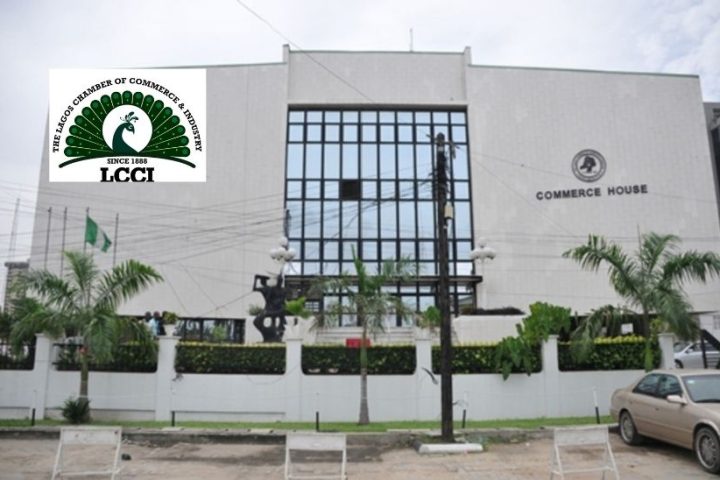The Heritage Bank liquidation has thrown Nigeria’s banking sector into a frenzy, leaving thousands of customers wondering what happened to their hard-earned money.
As the Nigeria Deposit Insurance Corporation (NDIC) gets ready to start paying out depositors in April, several startling aspects of this situation deserve closer attention.
Join our WhatsApp ChannelWhether you had an account with Heritage Bank or are just trying to make sense of this financial earthquake, these six shocking facts will give you a clearer picture of what happened and what it means for the future.
1. They Were Circling the Drain for Years Before Anyone Noticed
While the announcement of Heritage Bank’s liquidation may have seemed abrupt to many, financial experts point out that the institution had been battling significant challenges for years.
What’s truly shocking is how long the bank managed to operate despite these underlying issues.
Heritage Bank, which began operations after acquiring the defunct Societe Generale Bank of Nigeria, had struggled with liquidity problems and capital inadequacy for quite some time.
The Central Bank of Nigeria (CBN) had been monitoring the situation closely, with multiple regulatory interventions attempted before the final decision to revoke the bank’s license.
What many customers didn’t realise was that behind the scenes, Heritage Bank had been unable to meet the minimum capital requirements set by Nigeria’s banking regulations.
The bank’s inability to secure new investors or additional capital ultimately led to its downfall, revealing how precarious its position had been for years while still accepting deposits from unsuspecting customers.
Industry insiders suggest that the bank’s acquisition strategy and subsequent expansion may have overextended its financial capabilities, creating a situation where recovery became increasingly unlikely despite public assurances to the contrary.
This disconnect between the bank’s public image and its actual financial health represents one of the most concerning aspects of the collapse.
2. The NDIC’s Dividend Payment Schedule Is Unprecedented
Another shocking fact is how quickly the NDIC jumped into action on this one.
The Nigeria Deposit Insurance Corporation’s announcement about commencing dividend payments to depositors in April represents an unusually rapid response to a bank liquidation of this scale.
According to Punch Nigeria, the NDIC is moving quickly to address the concerns of affected depositors.
The NDIC plans to begin payments to depositors whose balances have been verified and who have completed the necessary claim forms.
This expedited process demonstrates the seriousness with which regulators are treating the situation, perhaps learning from criticisms of previous bank failures where depositors waited much longer for compensation.
The NDIC has also established verification centres across the country to facilitate this process, making it easier for affected customers to submit their claims regardless of their location.
This level of organisational response indicates the significant scale of the liquidation and its potential impact on the broader financial system if not handled efficiently.
Financial analysts point out that this swift action may be partially motivated by concerns about potential contagion effects or loss of public confidence in smaller banking institutions if depositors were left waiting too long for their funds.
3. Not All Depositors Will Recover Their Full Funds
Perhaps the most alarming fact for many Heritage Bank customers is the harsh reality that not everyone will recover all their deposits.
While the NDIC provides insurance coverage, this protection has limits that many customers may not have been aware of until now.
The standard deposit insurance coverage in Nigeria has historically been limited to a specific amount per depositor.
This means that customers with deposits exceeding this threshold may only recover a portion of their funds, depending on the bank’s remaining assets and the liquidation process.
The situation becomes even more complicated for corporate accounts, which often have higher balances.
Many businesses that trusted Heritage Bank with their operational funds now face significant financial challenges as they may recover only a fraction of their deposits.
What’s particularly troubling is that many depositors, especially individual customers, often assume their deposits are fully protected in the bank, regardless of the amount.
However, the Heritage Bank liquidation shows the limitations of deposit insurance and the risks associated with banking, even in regulated environments.
4. The Bank’s Digital Transformation Strategy Failed to Save It
In recent years, Heritage Bank had been positioning itself as a forward-thinking financial institution, investing heavily in digital transformation and innovative banking solutions
The bank launched several digital banking initiatives and positioned itself as a technology-driven financial partner for the modern Nigerian.
This digital strategy, despite appearing successful on the surface, failed to address the fundamental financial weaknesses that ultimately led to the bank’s collapse. This shows that digital transformation cannot compensate for core financial instability.
The bank’s marketing campaigns had emphasised its technological capabilities and customer-centric digital services, creating a perception of innovation and growth that masked its deteriorating financial position.
For many customers who chose Heritage Bank specifically for its digital offerings, the liquidation came as an especially bitter surprise.
Financial technology experts suggest that the bank’s investments in digital transformation may have actually accelerated its financial problems if these initiatives didn’t generate sufficient returns while requiring significant capital expenditure.
READ ALSO: Seven Nigerian Banks That Posted Record Profits In 2024: What It Means for You
5. The Liquidation Reveals Regulatory Oversight Weaknesses
Despite the Central Bank of Nigeria’s supervisory role and regular bank examinations, Heritage Bank’s problems were allowed to persist until liquidation became the only option.
It’s important to note that the issues that led to the bank’s failure weren’t new or sudden developments but rather long-term problems that seemingly escaped effective regulatory intervention at critical junctures.
This suggests potential gaps in how banking regulators identify, assess, and address risks within financial institutions.
The situation has prompted calls for a review of banking supervision frameworks and the implementation of more proactive measures to identify at-risk institutions before they reach the point of no return.
6. The Liquidation’s Impact Extends Far Beyond Account Holders
While depositors are the most visible victims of Heritage Bank’s liquidation, the impact of this collapse extends much further, affecting various stakeholders in ways that aren’t immediately obvious.
The bank employed thousands of people across its branches and operations centres, many of whom now face unexpected unemployment in a challenging job market.
The sudden loss of livelihood for these employees creates a ripple effect through their families and communities.
Additionally, Heritage Bank had established partnerships with numerous businesses, fintech companies, and service providers who now face disruption to their operations and potential financial losses.
Many small businesses that relied on credit facilities from the bank may struggle to secure alternative financing arrangements, potentially leading to further economic hardship.
The liquidation also impacts investor confidence in Nigeria’s banking sector, potentially making it more difficult for other financial institutions to attract foreign investment or partnerships.
Also, community development initiatives and corporate social responsibility projects previously supported by Heritage Bank now face an uncertain future, affecting educational institutions, healthcare facilities, and other beneficiaries who depended on this support.
So What Now?
The Heritage Bank liquidation isn’t just another business failure but a wake-up call, which reveals the significant challenges within Nigeria’s banking sector and regulatory framework.
For depositors, the most immediate concern is recovering their funds through the NDIC’s dividend payment process beginning in April.
For the broader financial ecosystem, this situation offers important lessons about risk management, regulatory oversight, and the limitations of deposit insurance.
As the NDIC works to address the immediate needs of affected depositors, policymakers and industry leaders must consider the deeper implications of this liquidation and work toward reforms that strengthen the stability and transparency of Nigeria’s banking sector.
Elsie Udoh is an SEO content writer who specialises in writing engaging stories that resonates with diverse audiences. She studied mass communication at the Lagos State University.

















